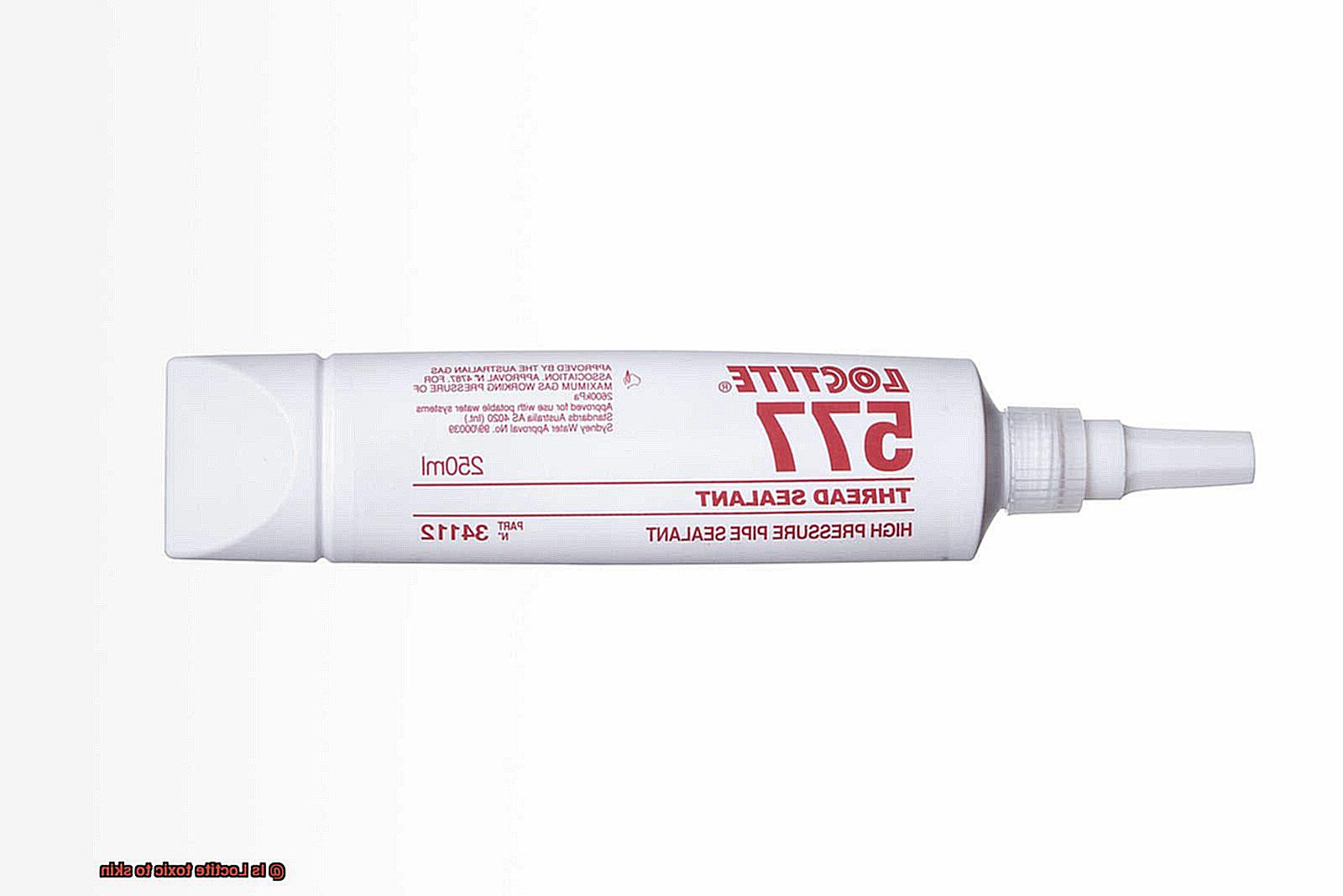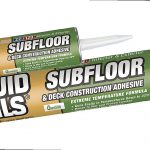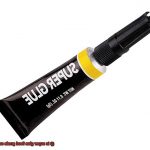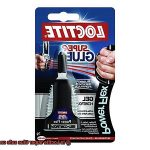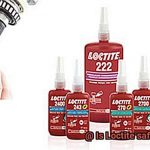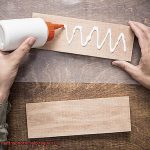Picture this: you’re knee-deep in a DIY project, and you need a reliable adhesive to keep everything together. Loctite pops into your head, known for its knack for bonding all sorts of materials. But hang on a second – is Loctite toxic to skin? Before we dive into this burning question, let’s get acquainted with the nature of Loctite and what it might mean for our precious skin.
Loctite, the rockstar brand in the adhesive world, offers a range of high-performance products that stick metal, plastic, rubber, wood – you name it. They’re used everywhere from industrial settings to everyday home repairs. But like any chemical substance, Loctite does come with some potential risks if we don’t handle it with care.
When it comes to contact with our delicate skin, we can categorize Loctite adhesives into two main groups: those based on cyanoacrylate and those based on an epoxy resin system. The cyanoacrylate-based ones are often called “super glues” because they bond crazy fast through something called polymerization. On the other hand, epoxy adhesives take their sweet time to cure through a chemical reaction.
Now here’s where the concern about skin toxicity kicks in – mainly with cyanoacrylate-based formulas. These adhesives can irritate our skin and leave us red-faced (literally), itching like madmen, or even dealing with burns if we get too cozy with them. If we let these sticky situations linger or do silly things like trapping the adhesive between our skin layers, things can go south real quick.
But hold your horses. Not all Loctite adhesives are equally toxic when it comes to our precious epidermis. Understanding each product’s unique properties and safety precautions is key before diving in. Manufacturers usually provide detailed instructions and safety data sheets (SDS) that lay out the potential risks associated with their products.
In the upcoming sections of this blog post, we’re going to dig deep into the potentially toxic components of Loctite, explore ways to minimize skin contact risks, and bust some myths that have been floating around. By getting a good grip on this topic, we can confidently navigate the world of adhesives and make smart choices while keeping our skin safe from any harm.
Types of Loctite Products and Their Potential Toxicity
Contents
- 1 Types of Loctite Products and Their Potential Toxicity
- 2 General Safety Precautions for Using Loctite
- 3 Potential Skin Irritation from Cyanoacrylates in Instant Adhesives
- 4 Allergic Reactions to Loctite Products
- 5 Protective Measures for Sensitive Individuals
- 6 Medical Grade Adhesives and their Specialized Formulations
- 7 What to Do if Experiencing Skin Irritation or an Allergic Reaction
- 8 Conclusion
When it comes to choosing a glue, Loctite is a popular brand known for its adhesive products. However, it’s essential to be aware of the potential hazards and take precautions when using these products.
In this article, we will explore the various types of Loctite glues and their potential toxicity, providing valuable insights on how to handle them safely.
Super Glue: Handle with Care.
Loctite’s super glue, also known as cyanoacrylate adhesive, is renowned for its rapid drying and strong bonding properties. While generally safe to use, it can cause skin irritation or even chemical burns if applied to sensitive areas or used excessively. To ensure safety, avoid direct skin contact and rinse off any accidental exposure immediately with soap and water.
Epoxy Adhesive: Exercise Caution
Epoxy adhesives consist of a resin and a hardener that create durable bonds once mixed. Although generally safe once cured, mishandling during the mixing process can lead to skin irritation. Safeguard your hands by wearing gloves and refrain from touching uncured epoxy mixtures.
Anaerobic Adhesives: Limited Risks
These adhesives cure in the absence of air and are commonly used for threadlocking and gasketing. While they typically pose minimal risks to the skin, it is advisable to avoid prolonged contact. In case of accidental exposure, promptly cleanse the affected area to prevent any potential irritation.
Silicone Sealants: Seal with Safety
Loctite’s silicone sealants are excellent for sealing gaps and joints. Once fully cured, they are generally safe to use on the skin. Nonetheless, during application, direct contact with uncured sealant should be avoided. Shield your hands with gloves and handle with care.
Acrylic Adhesives: Fast and Versatile
Acrylic adhesives cure quickly and are known for their versatility. Once fully cured, they are generally safe to use on the skin. However, like with other adhesives, proper handling during application is crucial. Follow instructions diligently, wear gloves if necessary, and steer clear of direct contact with uncured adhesive.
While Loctite products are generally safe when used as intended, it is crucial to prioritize safety and take necessary precautions. Wearing protective gloves and avoiding direct skin exposure are simple yet effective ways to minimize the risk of skin irritation or allergic reactions.
General Safety Precautions for Using Loctite
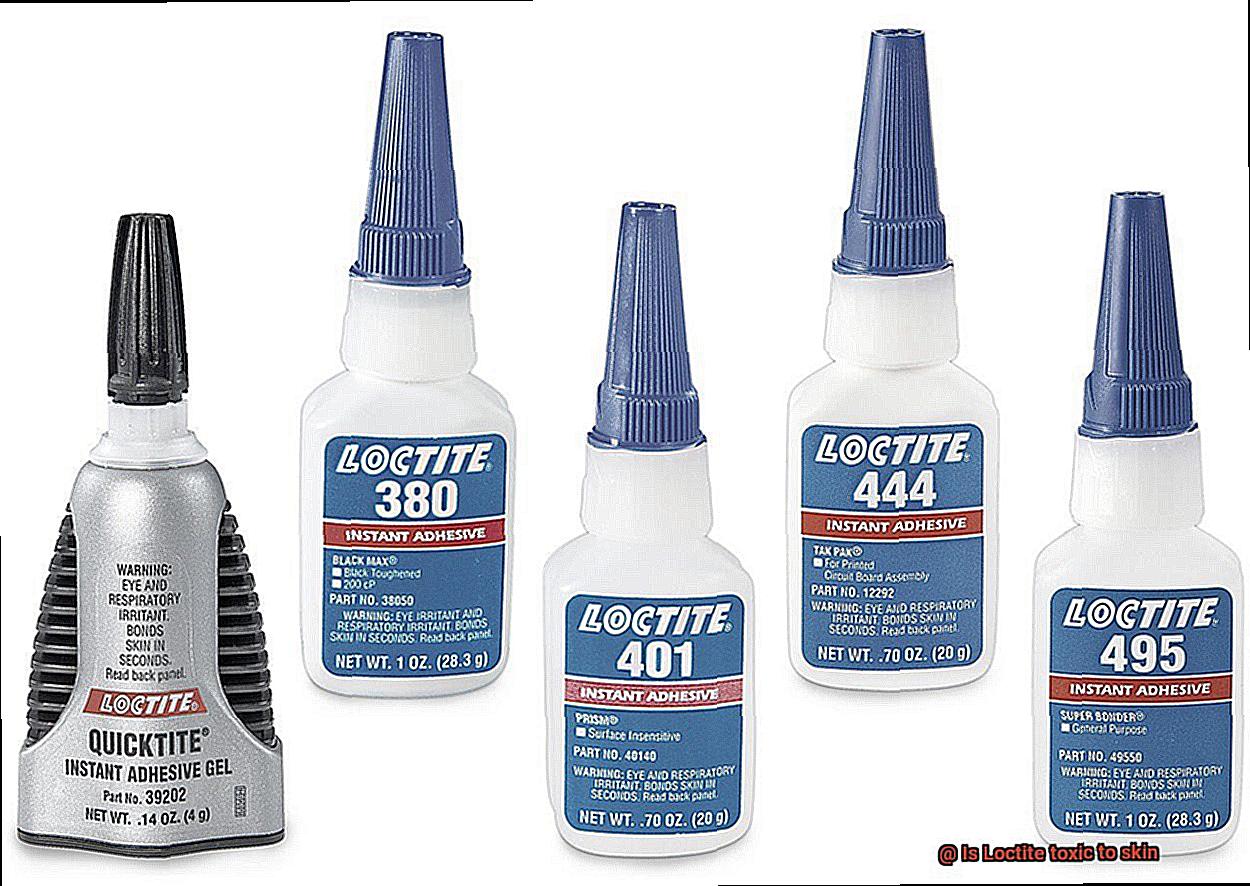
Loctite is a popular adhesive brand known for its exceptional bonding strength and versatility. Whether you’re a DIY enthusiast or a professional, it’s crucial to prioritize safety when using Loctite to avoid mishaps or potential harm. Let’s dive into some general safety precautions to keep in mind when working with this powerful adhesive.
- Ventilation is key: When using Loctite, ensure that you’re working in a well-ventilated area. This adhesive can release fumes that may irritate your respiratory system if inhaled in high concentrations. Think of it as giving your lungs a breath of fresh air. If you’re working in a confined space, consider using a respirator mask to protect your precious airways.
- Protect your skin: Loctite can cause skin irritation and allergic reactions in some individuals. To avoid direct contact, always wear gloves while handling the adhesive. Think of them as your armor against potential skin irritation. If any Loctite gets on your skin, wash it off immediately with soap and water. Your skin will thank you later.
- Shield your eyes: Your eyes are precious, so make sure to protect them when working with any adhesive, including Loctite. Splashes or accidental contact can cause severe eye irritation or damage. Don’t take any chances – wear safety goggles or a face shield to shield your peepers from harm.
- Read the instructions: Each type of Loctite may have specific safety guidelines provided by the manufacturer. Take the time to read and understand these instructions before using the adhesive. They may include information on proper storage, handling, and disposal of the product. Think of it as your personal guidebook to mastering the art of Loctite.
- Keep it away from children and pets: Loctite should be stored in a secure place out of reach of children and pets. Just like you wouldn’t want them getting into your secret stash of candy, you definitely don’t want them ingesting or inhaling the adhesive. It’s better to be safe than sorry when it comes to their health.
- Seek medical attention if needed: Accidents happen, and in case of accidental ingestion or inhalation of Loctite, it’s crucial to seek immediate medical attention. Don’t hesitate to reach out to healthcare professionals and provide them with all the relevant information about the adhesive. They’re there to help you and ensure appropriate treatment.
Potential Skin Irritation from Cyanoacrylates in Instant Adhesives
Glue, the enchanting substance that binds our world together, can sometimes leave an unwelcome mark on our skin. In this article, we will delve into the realm of cyanoacrylates – the culprits behind potential skin irritation caused by instant adhesives. Join us as we explore the symptoms, severity, and preventive measures that can help minimize this risk.
Understanding the Risk:
When cyanoacrylates, found in popular brands like Loctite, come into contact with our delicate skin, they possess the power to incite irritation. The intensity of this reaction varies from person to person, influenced by factors such as sensitivity, exposure duration, and adhesive concentration. Beware of symptoms including redness, itching, a burning sensation, swelling, and in severe cases, blisters or skin damage. It’s important to remember that cyanoacrylates are not intended for direct skin application – their purpose is to unite surfaces together.
Preventive Measures:
To quell the risk of skin irritation when handling instant adhesives, it is crucial to take protective measures. Start by donning gloves to erect a physical barrier between your skin and the adhesive. Additionally, consider fortifying exposed areas with a barrier cream as an extra layer of defense. Bear in mind gloves made from materials impervious to cyanoacrylate infiltration, such as nitrile or butyl rubber.
Immediate Action:
Even the most vigilant individuals are not immune to accidents. If you find yourself with cyanoacrylate adhesive on your precious skin, swift action is paramount. Cleanse the affected area promptly with soap and water. This simple step can help banish any lingering adhesive and mitigate potential irritation.
Allergic Reactions to Loctite Products
In our previous section, we marveled at the magic of cyanoacrylates in instant adhesives like Loctite. Today, we delve into a less glamorous topic – allergic reactions to Loctite products. Although rare, it’s vital to be aware of potential risks and take necessary precautions. Let’s dive right in.
The Immune System’s Misfire:
Allergic reactions occur when our immune system mistakenly identifies substances like cyanoacrylate in Loctite products as harmful, triggering a defense mechanism that manifests various symptoms on the skin.
Spotting the Signs:
If you’ve ever experienced redness, itching, swelling, or hives after using Loctite products, chances are you’ve encountered an allergic reaction. Some individuals may even experience more severe symptoms like difficulty breathing or anaphylaxis.
Sensitivity Matters:
It’s important to note that everyone’s sensitivity levels differ. While most people can use Loctite products without any issues, some individuals may be more prone to allergic reactions due to their unique immune system response or pre-existing allergies.
The Culprit Ingredient:
Cyanoacrylate, the main ingredient responsible for allergic reactions in Loctite products, can irritate and sensitize the skin, leading to allergic responses.
Minimizing the Risk:
To keep those allergic reactions at bay, here are some handy tips:
- Wear gloves: Protect your skin with gloves while handling Loctite products, especially if you have a history of allergies or sensitive skin.
- Avoid direct contact: Mindfully avoid direct contact between your skin and the adhesive to significantly reduce the chances of an allergic response.
- Wash, wash, wash: If an allergic reaction occurs, immediately stop using the product and wash the affected area with soap and water. This helps remove residual adhesive and minimize further irritation.
- Seek medical attention if needed: Should symptoms persist or worsen, reach out to a healthcare professional or allergist for further guidance and advice.
Hypoallergenic Alternatives:
Great news for those with sensitive skin. Loctite offers a range of alternative products specially formulated for individuals prone to allergic reactions. These hypoallergenic options are less likely to cause adverse skin responses, providing you with a safer glue experience.
Protective Measures for Sensitive Individuals
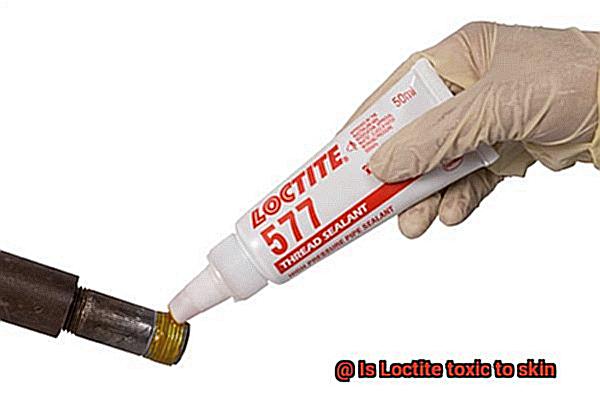
When it comes to sensitive individuals, using adhesive products like Loctite glue requires extra precautions to avoid allergic reactions or skin sensitivities. In this article, we will explore the protective measures that can be taken to ensure a safe experience for sensitive individuals. From wearing gloves to working in well-ventilated areas, these simple steps can minimize adverse effects when using Loctite.
Wear gloves and protective clothing:
The first and most crucial step is to wear gloves when handling Loctite or any adhesive. Nitrile gloves are recommended for their excellent chemical resistance and lower risk of skin irritation compared to latex gloves. Gloves act as a barrier between the adhesive and the skin, reducing direct contact and the chances of irritation or allergic reactions. Additionally, consider wearing long sleeves and pants to further minimize contact with the adhesive, especially during prolonged exposure.
Work in well-ventilated areas:
Ensure you are working in a well-ventilated area when using Loctite. Adequate ventilation helps reduce the concentration of potentially harmful fumes or vapors emitted during application and curing. Open windows or use exhaust fans to maintain a steady flow of fresh air, minimizing the chances of respiratory discomfort or other adverse effects.
Follow instructions:
Carefully read and follow the instructions provided by Loctite on the product packaging. The instructions often include specific safety guidelines for handling and applying the adhesive, which should be strictly adhered to. These guidelines may provide additional recommendations on protective measures or precautions specific to the particular product being used.
Promptly wash affected areas:
In case of accidental skin contact with Loctite, immediately wash the affected area with soap and water. Taking prompt action can remove any residual adhesive and minimize the chances of skin irritation or other adverse reactions. If symptoms persist or worsen, seek medical attention and inform healthcare professionals about the adhesive involved.
Medical Grade Adhesives and their Specialized Formulations
Medical grade adhesives are vital components in a wide range of healthcare applications, including wound closure, skin bonding, and medical device assembly. These adhesives undergo specialized formulations to meet stringent safety and performance standards for use on the skin. In this article, we will delve into the considerations and specialized formulations necessary for medical grade adhesives, ensuring their biocompatibility, flexibility, breathability, and antimicrobial properties.
Biocompatibility:
The primary consideration in formulating medical grade adhesives is their biocompatibility. This critical characteristic ensures that the adhesive can perform its intended function without causing any adverse effects on living tissue. To guarantee safety, these adhesives undergo rigorous testing to assess their biocompatibility and skin tolerance.
Synthetic Polymers:
Medical grade adhesives typically consist of synthetic polymers such as cyanoacrylates, polyurethanes, and silicones. Cyanoacrylates are particularly popular due to their rapid curing time and exceptional bonding strength. However, not all cyanoacrylate adhesives are suitable for skin contact, as some formulations may contain additives or impurities that can cause skin irritation or allergic reactions.
Specialized Formulations:
To address these concerns, manufacturers develop specialized formulations specifically designed for skin contact. These formulations undergo additional testing to assess biocompatibility and skin tolerance while adhering to regulatory requirements such as ISO 10993, which provides guidelines for evaluating the biocompatibility of medical devices.
Flexibility and Breathability:
Wound closure applications require medical grade adhesives to be flexible, allowing natural movement and healing of the skin. Moreover, these adhesives should be permeable to oxygen and moisture to create an optimal healing environment. Such properties promote faster healing and reduce the risk of complications.
Antimicrobial Properties:
In some instances, medical grade adhesives may include antimicrobial agents to prevent infection. These agents inhibit the growth of bacteria and other microorganisms, reducing the risk of complications associated with wound healing.
What to Do if Experiencing Skin Irritation or an Allergic Reaction
Adhesive products like Loctite can be incredibly useful for various tasks, but sometimes they can cause skin irritation or allergic reactions. If you find yourself experiencing discomfort after using Loctite or any other adhesive, it’s important to know what steps to take. By following these simple guidelines, you can alleviate the symptoms and prevent further complications.
Stop using the product:
If you notice any skin irritation or allergic reaction, the first step is to immediately stop using the adhesive product. Continued exposure to the allergen can worsen your symptoms and potentially lead to more serious complications.
Remove the adhesive:
Gently remove any adhesive residue from your skin using a mild soap and lukewarm water. If needed, you can also use rubbing alcohol or acetone, but be cautious as they may further irritate sensitive skin.
Cleanse the affected area:
After removing the adhesive, cleanse the affected area with mild soap and lukewarm water. Avoid using harsh soaps or scrubbing vigorously, as this can exacerbate the irritation.
Apply a cold compress:
To reduce inflammation and relieve itching or pain, apply a cold compress or a clean, damp cloth to the affected area for 15 minutes at a time. This will help soothe your skin and provide much-needed relief.
Use over-the-counter remedies:
Over-the-counter hydrocortisone creams or calamine lotion can be applied to alleviate itching and reduce inflammation. However, it’s crucial to consult with a healthcare professional before using any medication to ensure it is safe for you.
Moisturize the skin:
Regularly moisturizing your skin with fragrance-free and hypoallergenic moisturizers can help repair the skin barrier and prevent further irritation.
Seek medical attention:
If your symptoms persist, worsen, or if you notice signs of infection such as redness, swelling, or pus, it’s important to seek medical attention. A healthcare professional can provide further guidance and prescribe stronger medications if necessary.
6J0fpMMaRnc” >
Conclusion
In conclusion, it is important to understand that Loctite can indeed be toxic to the skin. The chemicals present in Loctite adhesives have the potential to cause irritation, redness, and even burns when they come into contact with the skin. This is why it is crucial to take proper precautions when handling Loctite products.
Shortened version:
In conclusion, Loctite can be toxic to the skin. Its chemicals can irritate, redden, and even burn upon contact. Therefore, it’s vital to handle Loctite products with caution.
Improved version:
To wrap things up, it’s essential to grasp that the skin is susceptible to the toxicity of Loctite. The chemical components found in these adhesives possess the capability of provoking irritation, inflammation, and even scorching sensations when they make direct contact with our delicate epidermis. Consequently, adopting appropriate safety measures while managing any Loctite product becomes an utmost necessity.
Vivid language version:
Let’s bring this discussion to a close by acknowledging a critical fact – Loctite has the potential to wreak havoc on our precious skin. The concoction of chemicals lurking within these adhesives possesses a devious ability to incite irritation, unleash inflammation, and leave us feeling like we’ve been scorched by an invisible flame. Henceforth, taking meticulous precautions while handling any Loctite product becomes an unwavering obligation for all who value their dermal well-being.

